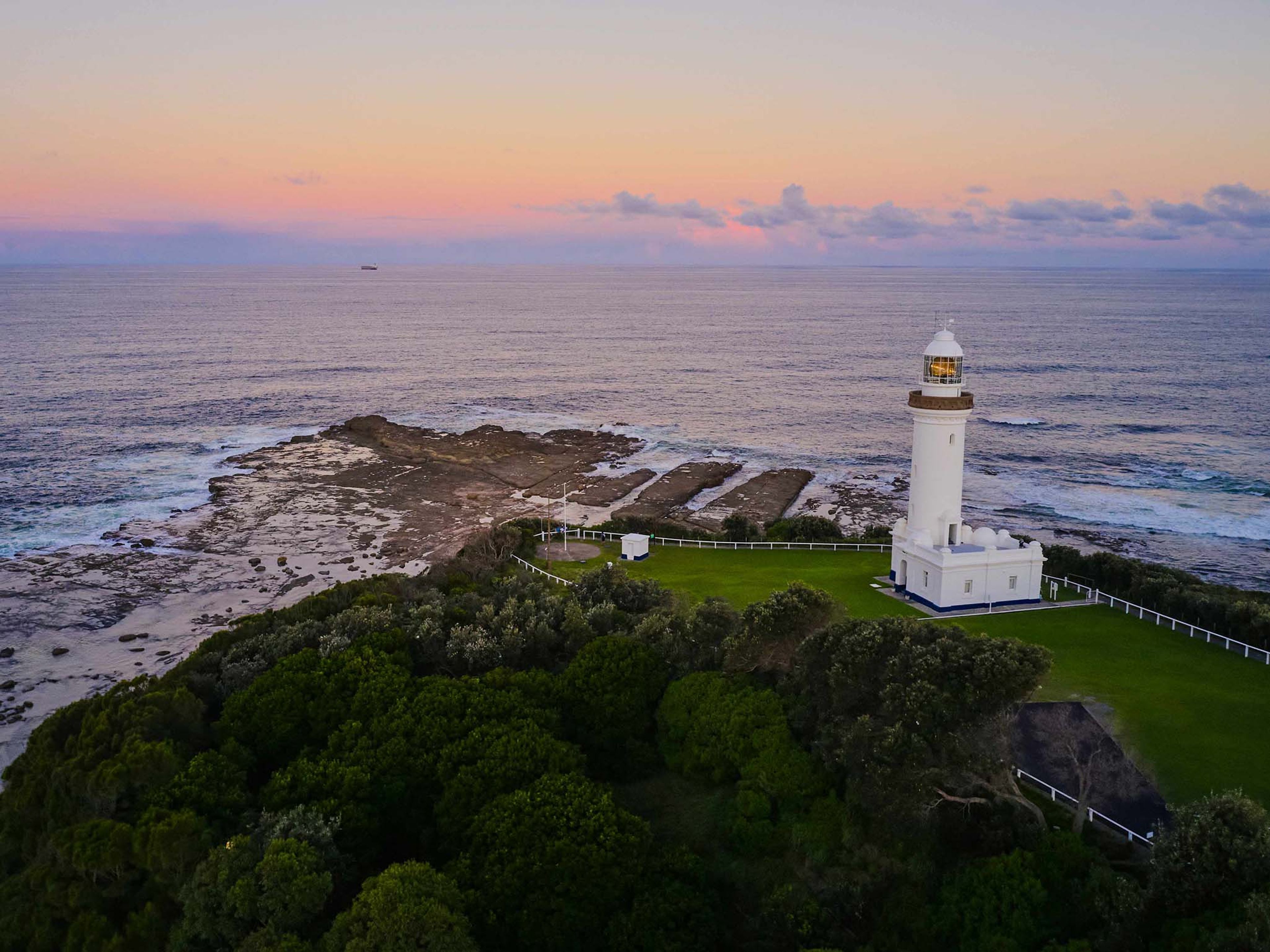
Norah Head Lighthouse has been a beacon for ships and the community for over 100 years. Find out more about this fascinating piece of history and its role in the modern world.

Why was Norah Head Lighthouse built?
During the late 18th Century, maritime travel between Sydney and Newcastle posed significant dangers. The treacherous coastal conditions, including thick fog, fierce storms, rugged rocks, and blackout conditions, led to numerous shipwrecks and loss of life among seafarers.
Edward Hammond Hargraves, a prominent resident of Noraville known for igniting the first Australian Gold Rush in 1851, initiated the push for a lighthouse. Witnessing tragic shipwrecks, notably the coal-carrier Esperanza in 1868, spurred Hargraves to advocate for better navigational aids. The sinking of the steamer Gwydir in 1884 further intensified the determination of maritime authorities to establish a lighthouse at Norah Head.
Who designed Norah Head Lighthouse?
Officially designed by Charles Assinder Harding, the architectural style of the lighthouse was attributed to James Barnet, considered a pioneer of colonial architecture in New South Wales. Barnet, renowned for designing iconic structures like the Sydney General Post Office, imbued Norah Head Lighthouse with his classical design principles. It was the last of Barnet's designs in this style and marked a shift toward standardized construction methods for remote lighthouses, paving the way for similar projects across Australia.
Inspired by the first Macquarie Lighthouse at South Head, Sydney, Barnet crafted Norah Head Lighthouse using pre-cast concrete blocks produced on-site and local materials. His meticulous design included tiled floors, a bluestone balcony, and gunmetal railings, showcasing his architectural finesse.
When was Norah Head Lighthouse built?
Construction of the lighthouse commenced on February 26, 1901, overseen by C.W. Darley and C.A. Harding of the Public Works Department. Completed in 1903 at a cost of approximately £24,000, the lighthouse boasted innovative features, including advanced optics.
On November 15, 1903, the lighthouse was inaugurated by the Department of Harbours and Rivers Superintendent, with key officials and dignitaries in attendance. The inaugural lighting ceremony marked the beginning of its service, with W.H. Williams appointed as the Principal Keeper.
Initially illuminated by a vaporized kerosene burner, the light emitted 118,000 candlepower, visible up to 18 nautical miles in clear weather. Over the years, the lighthouse underwent several upgrades, including the installation of a new Chance Bros. Mantle in 1910, enhancing its luminosity to 438,000 candle-power.
In 1923, advancements in lighting technology led to the adoption of a Ford-Schmidt kerosene burner, increasing the brilliance to 700,000 candlepower. Subsequent adjustments in 1928 slowed the light's rotation to every 30 seconds, reducing strain on the keepers.

Norah Head Lighthouse starts using electricity to power the light
Modernization efforts in 1961 replaced the kerosene burner with mains electricity, boosting the light's power to 1,000,000 candlepower while retaining the original lens. Further upgrades in 1995 automated the light, utilizing a 1000-watt tungsten halogen lamp and a Fresnel classic, 2nd Order Di-optic prism, extending visibility to 28 nautical miles.
Tell me about Norah Head Lighthouse today
Since its establishment, Norah Head Lighthouse has played a vital role in maritime safety, guiding countless vessels along the coastline. Despite advancements in technology, the lighthouse stands as a testament to the rich, maritime heritage of the region.
A true beacon for the Norah Head community, Norah Head Lighthouse not only provides opportunities for volunteers to get involved and employment for local people, but also local business support with the events, weddings and lighthouse tours, which bring visitors from far and wide to share in the unique experiences offered on the reserve and in the local community.